Robert Lucas Pearsall (the Elder) (1795-1856)
Biographical
Notes by John
Barnard
Updated 10 March 2015 [in progress]
Pearsall was the great-grandfather of my maternal grandmother, Ethel de Pearsall James (née Clabburn), and the most famous of my recent ancestors, meriting his own Wikipedia article as well as an entry in the Oxford Dictionary of National Biography. A biography of him was privately published in 1977 [Edgar Hunt, "Robert Lucas Pearsall. The Compleat Gentleman and his Music" Published by the Author, 1977. Copies available from CHOMBEC at the University of Bristol].
Pearsall came from a wealthy family in Gloucestershire, and though he spent a few years working as a barrister, he spent most of his adult life travelling in Europe, pursuing a variety of musical, genealogical and antiquarian interests. Eventually he purchased and settled at Schoss Wartensee, a mediaeval castle overlooking Lake Constance (the Bodensee) in Switzerland, which he did much to restore; the castle is now a hotel and gourmet restaurant.
His fame is based on his musical compositions, primarily the short madrigals and part-songs for unaccompanied choir, which have remained popular among amateur singers ever since his own lifetime.
Biography
[To be completed]
Portraits
There are several portraits of Pearsall, and there is an extended discussion of their history on pages 6-7 of Hunt's biography. The earliest is a watercolour of him as a boy, made in 1809 by his father, which was held at the Bristol Museum and Art Gallery, but was unfortunately destroyed during the Second World War, though Hunt's biography contains a black-and-white reproduction of it. Hunt's biography also contains a reproduction of a pencil drawing of Pearsall in his late twenties, though does not indicate the artist or its whereabouts.
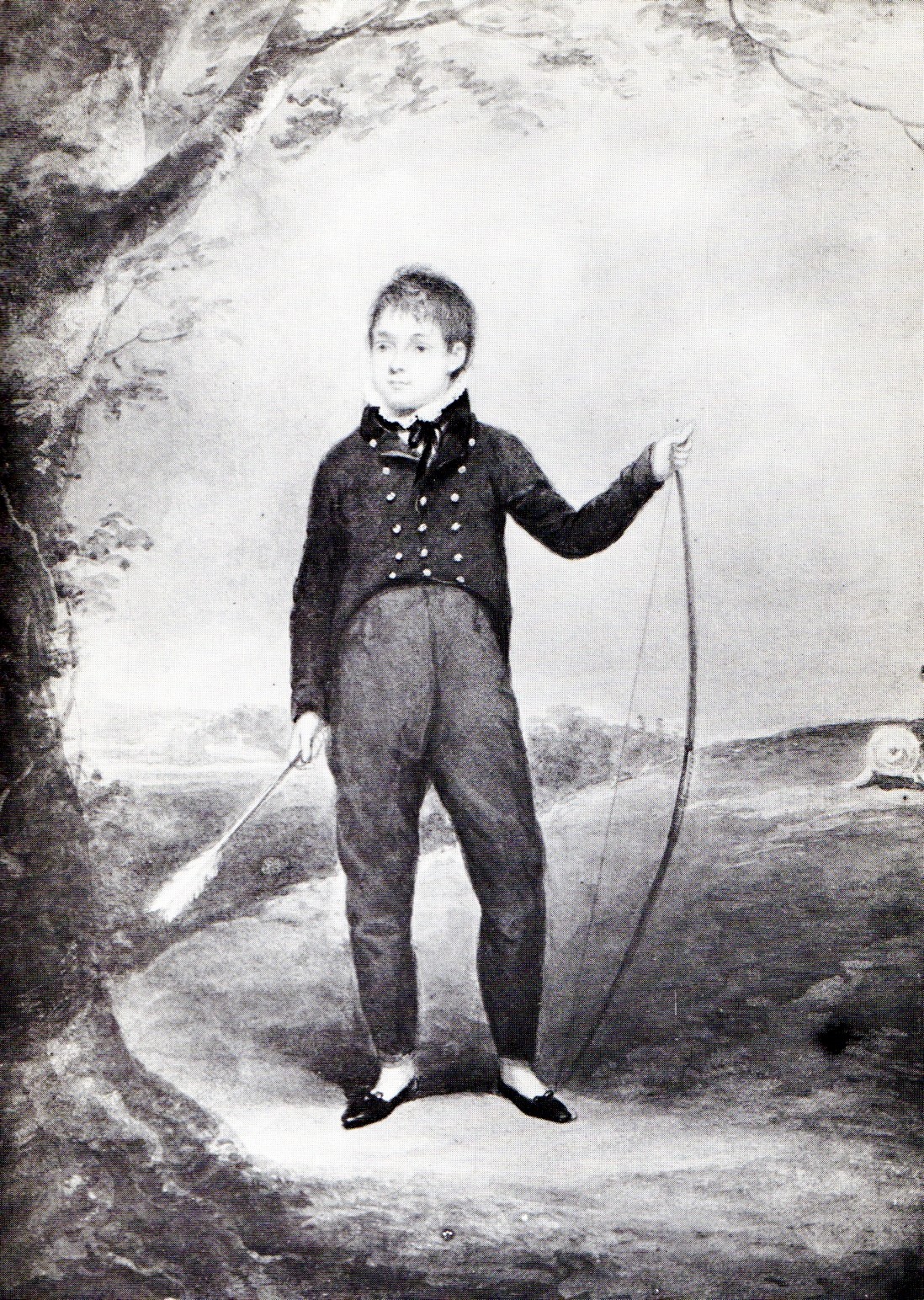 |
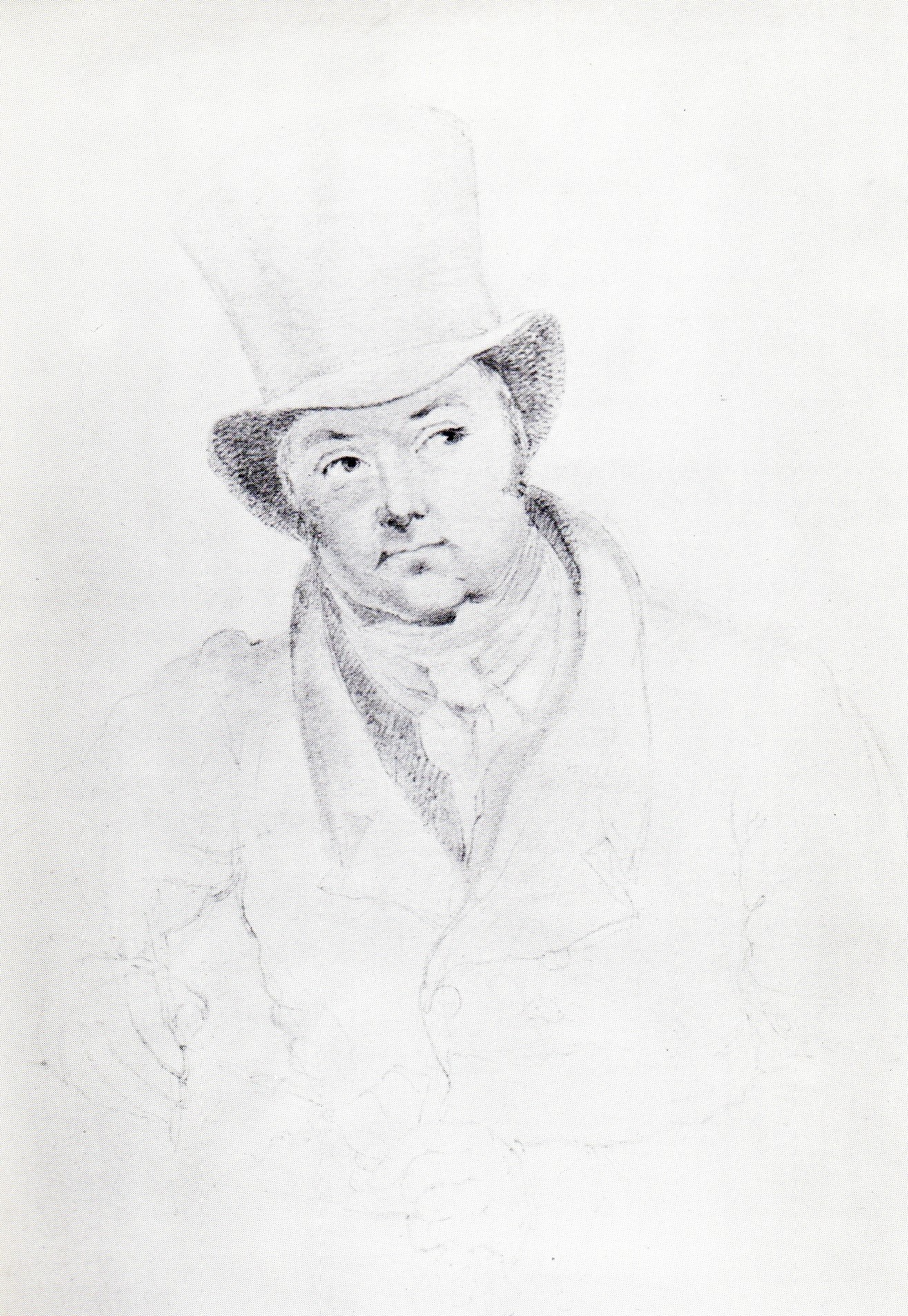 |
| Pearsall as a boy | Pearsall as a young man |
There are two oil-on-canvas portraits made by Pearsall's younger daughter Philippa. The original is held at the Benedictine Monastery at Einsiedeln in Switzerland, where most of Pearsall's manuscripts are also located, and was painted from life, probably when Pearsall and Philippa were living together at Schloss Wartensee. After the sale of Wartensee and its contents, Philippa attempted to reproduce it from memory, though Hubert Hunt quotes her as saying that she had been unable to satisfy herself that it was true to life. This version is now at the National Portrait Gallery in London. When the two versions are seen side by side, the superiority of the original Einsiedeln version is obvious.
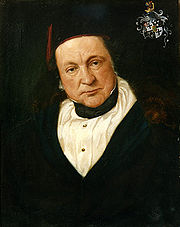 |
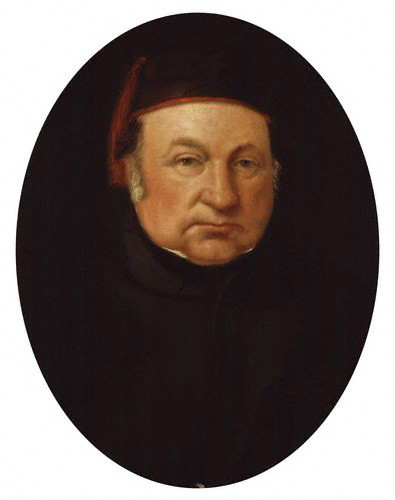 |
| Einsiedeln version | National Gallery version |
Hunt's biography also contains reproductions of a pencil drawing of Pearsall, made by Philippa in the last few months of his life, and of a photograph of him taken by his son immediately after his death, though it is not indicated where the originals of these are kept.
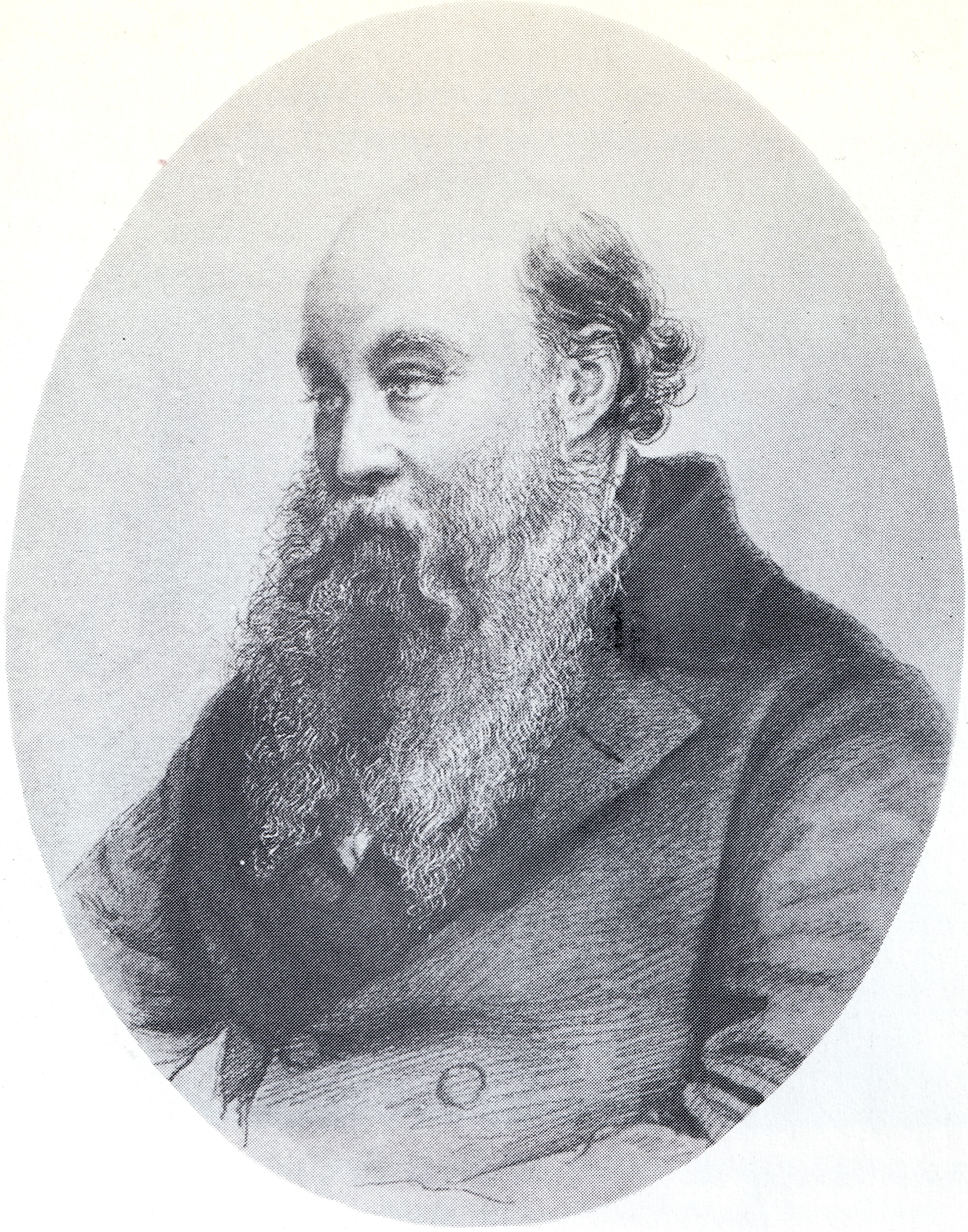 |
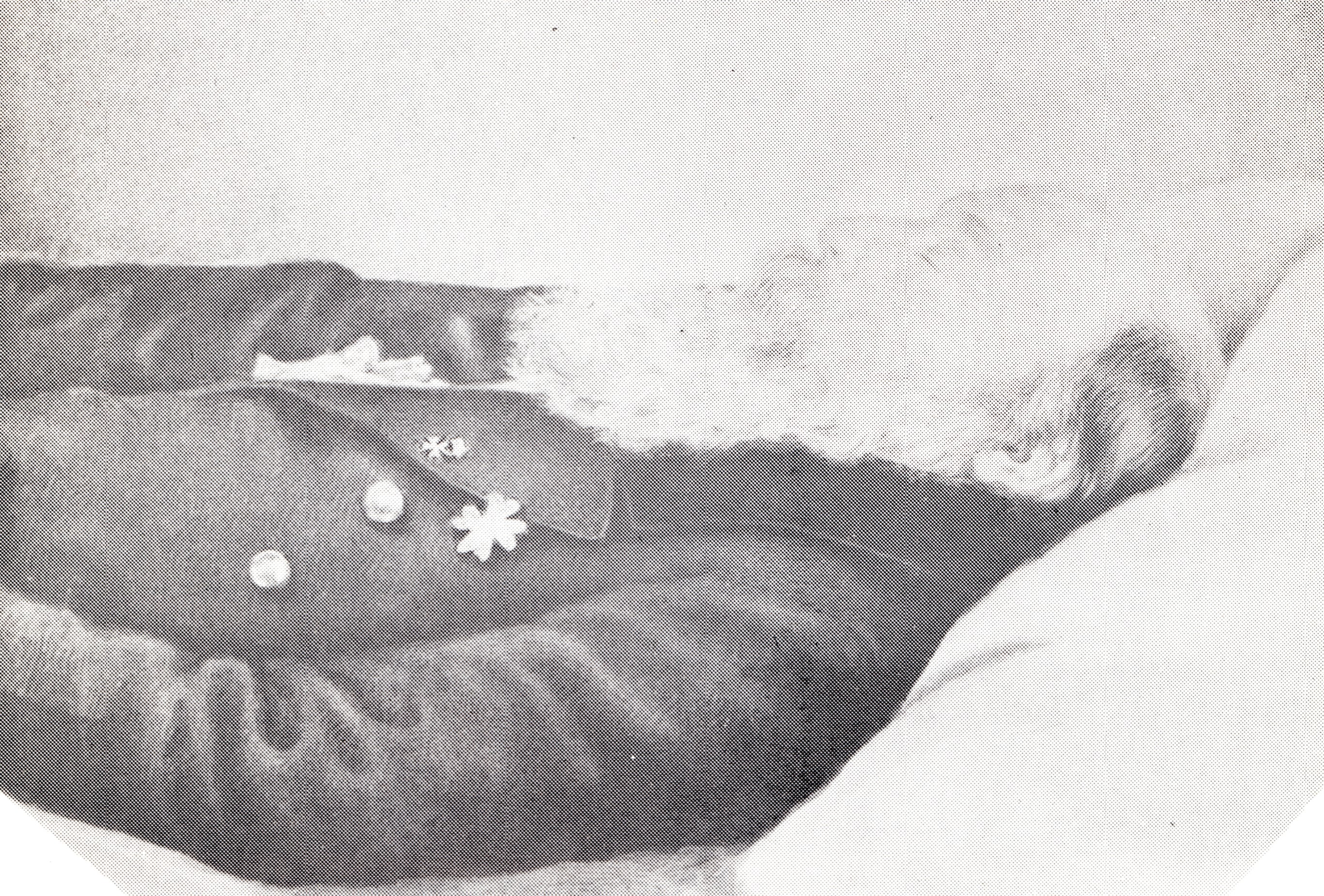 |
| Drawing of Pearsall in 1856, by his daughter Philippa | Photograph of
Pearsall on his deathbed |
Family
On 23 Aug 1817, aged 22, Pearsall married Marie Henriette (Harriet) Elizabeth Hobday, daughter of the portrait painter William Armfield Hobday (1771-1831), and they had four children.
- John Still Pearsall, born on 17 Sep 1818, but died on 8 Sep 1820, shortly before his second birthday, and less than a month before the birth of his younger brother.
- Robert Lucas Pearsall (the Younger), my great-great-grandfather (3 Oct 1820 - 14 Dec 1865). He spent six years as a cavalry officer in the Imperial Austrian army, subsequently living with his mother during his parents' separation. After his father's death he moved to London, working as a fencing master and marrying twice. Among his descendants he has a reputation as the "black sheep" of the family, and he was eventually found drowned in mysterious circumstances in an east London canal, aged only 45.
- Elizabeth Still Pearsall, born 8 Mar 1822, who eloped, aged 16, with Charles Wyndham Stanhope (1809-1881), to whom she was married on 16 Feb 1839 at the British Embassy in Paris. Stanhope was a grandson of the 3rd Earl of Harrington, and in 1866 he rather unexpectedly succeeded to the title and estates himself, on the untimely death of his 20-year old unmarried cousin, the 6th Earl. They are the direct ancestors of the present (12th) Earl of Harrington (b. 1945), whose daughter Serena is married to the Queen's nephew, Viscount Linley, thus providing a rather tenuous Royal connection for our family!
- Philippa Swinnerton Pearsall (6 Feb 1824 - 7 Feb 1917) did much to ensure that her father's manuscripts were preserved, and editions of his music published; she was an accomplished artist and painted two portraits of her father. On 17 Sep 1857 she married a lawyer named John Hughes (1805-1883); he was some 19 years her senior, and had a son, Talbot, by a previous marriage, though his marriage to Philippa produced no further children.
Music
Pearsall was a near contemporary of Rossini (1792-1868) and
Schubert
(1797-1828), though his musical style is very different. He did take
some lessons from the Austrian composer Joseph Panny, but was largely
self-taught. He wrote music in a number of different forms, though
(with the exception of the recent interest in his Requiem in G minor)
only his unaccompanied madrigals and part-songs are performed today.
While living at Karlsruhe between 1828 and 1836 he wrote several
orchestral pieces, including a Symphony (now lost) and a few
overtures; that to Macbeth
was published by Schott in 1839. There are
also some pieces of chamber music for strings, including a quartet
and two quintets, the manuscripts for which are held in the music
library at Einsiedeln Monastery.
Pearsall's reputation rests largely on twenty or thirty short pieces for unaccompanied choir, usually with four voice-parts (soprano, alto, tenor and bass), though the finest of them have eight or even ten independent parts. Many of the best-known were written for the Bristol Madrigal Society, which he helped to found in 1837 (and which continues today as the Bristol Chamber Choir), and have secular texts, often written by Pearsall himself. Though they are clearly inspired by the work of Elizabethan madrigal composers such as Morley (1557/8-1602) and Weelkes (1576-1623), Pearsall added harmonic and structural elements from the Classical and early Romantic periods. The pieces are variously described as part-songs, ballads, madrigals or glees, though the precise distinctions between these forms are rather unclear. He also wrote a good deal of music setting religious texts, for both the Catholic and Protestant liturgies, with Latin, German and English words. Amongst these, his motet Tu es Petrus (setting the words of Christ's commission to St Peter to found the Church, found in St Matthew's gospel) uses the same music as the 8-part madrigal Lay a Garland.
The well-known British lutenist and early music specialist, Anthony Rooley, who has expanded his interests into the 19th century, has written about Pearsall's music in an essay accompanying his CD recording of some of it [Lay a Garland: Doppelchörige Madrigale, Musiques Suisses MGB CD6206]. He compares Pearsall's artistic concept, in which he combines the discipline of ancient forms from 250 years before his own time with the freer harmonic language of more recent composers, with the roughly-contemporary pre-Raphaelite movement in painting. He has also drawn attention to Pearsall's effective use of double, triple and even quadruple harmonic suspensions (in which one or more notes from one chord are "held over" to sound against the notes of the succeeding chord, before "resolving" into that chord), citing an instance in Great God of Love in which all seven notes of the scale are sung simultaneously. Rooley proclaims Pearsall "the undisputed master of the Victorian madrigal".
Novello & Co have published two volumes containing twelve of Pearsall's part-songs between them, edited by Ralph Allwood [Catalogue numbers NOV451638 and NOV451649] and in 2012 the music director of the South West Chamber Choir, Stephen Trahair, edited a further twelve in a volume entitled When the Leaves Are Green (the second line from Pearsall's Who shall have my Lady Fair) [Available from Stephen Trahair at 10 South Hill, Stoke, Plymouth PL1 5RR]. Numerous others are available as sheet music from various publishers.
Pearsall considered his Requiem in G minor, composed during the last three years of his life, to be his finest work. Though it is one of his longest pieces (just over twenty minutes) it is divided into ten sections, none of which lasts for more than five minutes. It is scored for four-part chorus (with one section in five parts), and occasional solo lines, with a sonorous accompaniment for brass instruments and organ. The manuscript remains at Einsiedeln, and in 1920 Barclay Squire [page 311 in "Letters of Robert Lucas Pearsall [Continued]", The Musical Quarterly, 6 (2), Apr 1920, pp. 296-315] claimed that it was occasionally performed there; there is also copy, made by the composer's daughter Philippa, in the British Library. In 2005 the score was edited by Christopher Brown and published by Oxford University Press (Church Music Society Reprints No. 103).
There is a question over the authorship of the well-known Duetto buffo di due Gatti (the "Cat Duet"), often attributed to Rossini, in which two sopranos sing "miaowing" noises at each other, lightly accompanied by piano, generally to much hilarity as they demonstrate the legendary cattiness of prima donna singers. Much of the music is indeed lifted from Rossini's opera Otello (part of a duet between Othello and Iago, of all things!), along with part of a "Cat cavatina" by the Danish composer Christoph Weyse (1774-1842), but it is clearly intended as a not very complimentary skit on Rossini's style, and the behaviour of operatic sopranos. It was published in London in 1825 by Ewer and Johanning, under the name of "G. Berthold". However, the duet also occurs (in an orchestral version, and with no other attribution) in Pearsall's pantomime ballet The Reveller's Night (Der Nach eines Schwärmers), for which Pearsall's manuscript is at Einsiedeln. In 1973, Schott published a facsimile of the 1825 version, with an introduction by Edgar Hunt, who argued in his biography of Pearsall, that "G. Berthold" was a pseudonym, and that Pearsall was the real compiler of this little parody. Certainly, Pearsall published several articles on music under pseudonyms including, in 1839, a series of letters in the style of, and under the name of, the polemicist William Cobbett (1763-1835), which suggest that he was not an admirer of contemporary operatic music. On the other hand, the original publication of the Cat Duet in 1825 is before almost all Pearsall's efforts at composition (though, of course, it is only a compilation).
Notwithstanding Pearsall's own preference for the Requiem, general opinion ranks his finest compositions as being the eight-part madrigals Lay a Garland and Great God of Love. His setting of the mediaeval Christmas carol, In dulci jubilo, for eight solo parts and five-part choir (though a four-part choral version exists too), remains very popular, and is frequently included in the Festival of Nine Lessons and Carols from King's College Cambridge, broadcast throughout the world every Christmas Eve; in December 2008 a panel of choirmasters voted it the second greatest Christmas carol in a poll for BBC Music Magazine.
Academic and Other Interest
Though a few of Pearsall's pieces have remained continuously in the repertoire of amateur choirs since his own lifetime, recent years have seen a steady increase in the interest in his music from academic musicologists (especially in the United States of America) and others.
Immediately after Pearsall's death in 1856, a 20-page pamphlet in French, entitled Notice Necrologique sur le Baron Robert Lucas de Pearsall, de Willsbridge appeared in Paris, under the name of E. de Saint-Maurice Cabany, Director General of the Imperial Society of Archivists of France. Much of this is devoted to discussion of his Norman ancestry, and it contains only a brief account of his music.
In 1882, Julian Marshall, an amateur musician and tennis player (he helped formulate the rules under which the Wimbledon Championships are still run!) published a brief memoir of Pearsall in the Musical Times [Julian Marshall, "Pearsall: A Memoir", Musical Times, 1 July 1882, pp. 375-376], after it had been turned down by Grove's Dictionary of Music and Musicians.
William Barclay Squire (1855-1927), who was head of the music department at the British Museum library, annotated and published several of Pearsall's letters to his friend, the Rev. Henry Thomas Ellacombe, in a pair of articles in the Musical Quarterly [Musical Quarterly 5 (2) 264-297 (1919) doi:10.1093/mq/V.2.264 ; Musical Quarterly 6 (2) 296-315 (1920) doi:10.1093/mq/VI.2.296].
Hubert
Hunt (1865-1945), who was organist at Bristol Cathedral from 1901 to
his death, developed an interest in Pearsall's music when he became
conductor of the Bristol Madrigal Society in 1915, and did much
research into his life and works, including meeting
Pearsall's daughter Philippa Hughes, then aged over 90, on
several
occasions. He also knew the Rev. Canon Henry Nicholson Ellacombe, son
of
Pearsall's friend Rev. Henry Thomas Ellacombe (both vicars of Bitton).
Hubert Hunt's interest was inherited by his son, Edgar
Hunt (1909-2006),
who self-published a biography of Pearsall in 1977 [Edgar Hunt, "Robert
Lucas Pearsall. The Compleat Gentleman and his Music" Published by the
Author, 1977. Copies available from CHOMBEC at the University of
Bristol].
In
1975, Tramel Rex Wilson wrote a PhD Thesis at North Texas State
University on "The Musical Writings and Music of Robert Lucas Pearsall"
[Dissertation Abstracts 35
(5) 2485-A, 1975].
Bristol University's Centre for the History of Music in Britain, the Empire and the Commonwealth (CHOMBEC) has a particular interest in Pearsall's music, partly because of his Bristol associations. It is the repository for the archives of the Bristol Madrigal Society and also holds the papers of Pearsall's biographer Edgar Hunt.
In 2002, Anthony Rooley performed and recorded several of Pearsall's madrigals. The accompanying booklet for the CD recording [Lay a Garland: Doppelchörige Madrigale, Musiques Suisses MGB CD6206] contains an essay by him on Pearsall's compositions, and on 28 June 2009 he participated in an edition of the Choirworks programme on BBC Radio 3, in which he discussed them with the presenter Aled Jones.Anthony Rooley and Jeffery Kite-Powell, former Professor of Musicology at Florida State University, prepared the first modern performance of Pearsall's Requiem. The performance was given (unconducted) on 17 April 2005 by Cantores Musicæ Antiquæ and an instrumental brass ensemble in the Opperman Music Hall on the Florida State University College of Music campus. Professor Kite-Powell has made a recording of the performance available on Youtube (see below), along with recordings of several of Pearsall's part-songs, and provided a list of links to them.
Dr W. Bryce Hayes, now at the School of Music at James Madison University in Virginia, conducted a performance of the Requiem on 26 February 2011 as part of his Doctorate of Musical Arts in Conducting at the University of Minnesota.
Recordings
There are now quite a number of commerical recordings of Pearsall's madrigals; most are albums including only one or two of his best-known pieces, though a few are devoted entirely to his music.- Undoubtedly the best performances are those on the CD recorded by a specially-formed professional choir, the Pre-Raphaelite Singers, conducted by Anthony Rooley. This includes 25 of Pearsall's madrigals and part-songs, the bulk of his output in this form. The recording was released on the Musiques Suisses label (MGB CD 6206) and in the past has been extremely difficult to obtain in the UK. However, it is currently (February 2015) advertised on Amazon (http://www.amazon.co.uk/Robert-Lucas-Pearsall-Lay-Garland/dp/B001GALAHU) and is also available for download from the American website Classics Online (http://www.classicsonline.com/catalogue/product.aspx?pid=2011889).
- The Bath Camerata's album Why Do the Roses, conducted by Nigel Perrin, has 22 of Pearsall's part-songs, including a few which are omitted from the Pre-Raphaelite Singers' album (notably his setting of In Dulci Jubilo). It is available on the Meridian label (CDE84392).
- A CD recorded by the National Youth Choir of Great Britain conducted by Michael Brewer and Robert Isaacs couples Pearsall's music with that of the later British composer Charles Wood (1866-1926). It includes only four pieces by Pearsall, all of which are duplicated by either or both of the CDs mentioned above (Priory PRCD 622).
- To date, the only compact disc recording of Pearsall's Requiem, is that made by in 2009 by the Bristol Chamber Choir (the present-day incarnation of the choir that Pearsall himself helped to found, the Bristol Madrigal Society) conducted by Edward Rhys-Bate. It is the main work on their album Echoes Around Us, which is available from the choir itself (http://www.bristolchamberchoir.org.uk/page8.html).
- Perhaps with rather better singing, the sound-only recording of the first modern performance of the Requiem, given at Florida State University by Cantores Musicæ Antiquæ and an instrumental brass ensemble prepared by Jeffery Kite-Powell and Anthony Rooley, is available on Youtube (https://www.youtube.com/watch?v=NlZdjLQWIHE).
- Numerous other performances of Pearsall's works, of varying quality, appear on Youtube. Among the most delightful is one of the Cat Duet (which may have been put together by Pearsall) performed as an encore at the Last Night of the 1996 Proms by Felicity Lott and Ann Murray, accompanied by Andrew Davis (https://www.youtube.com/watch?v=DMngXo9B_Vg).
- I am not aware that any recordings have been made of any of Pearsall's instrumental music.